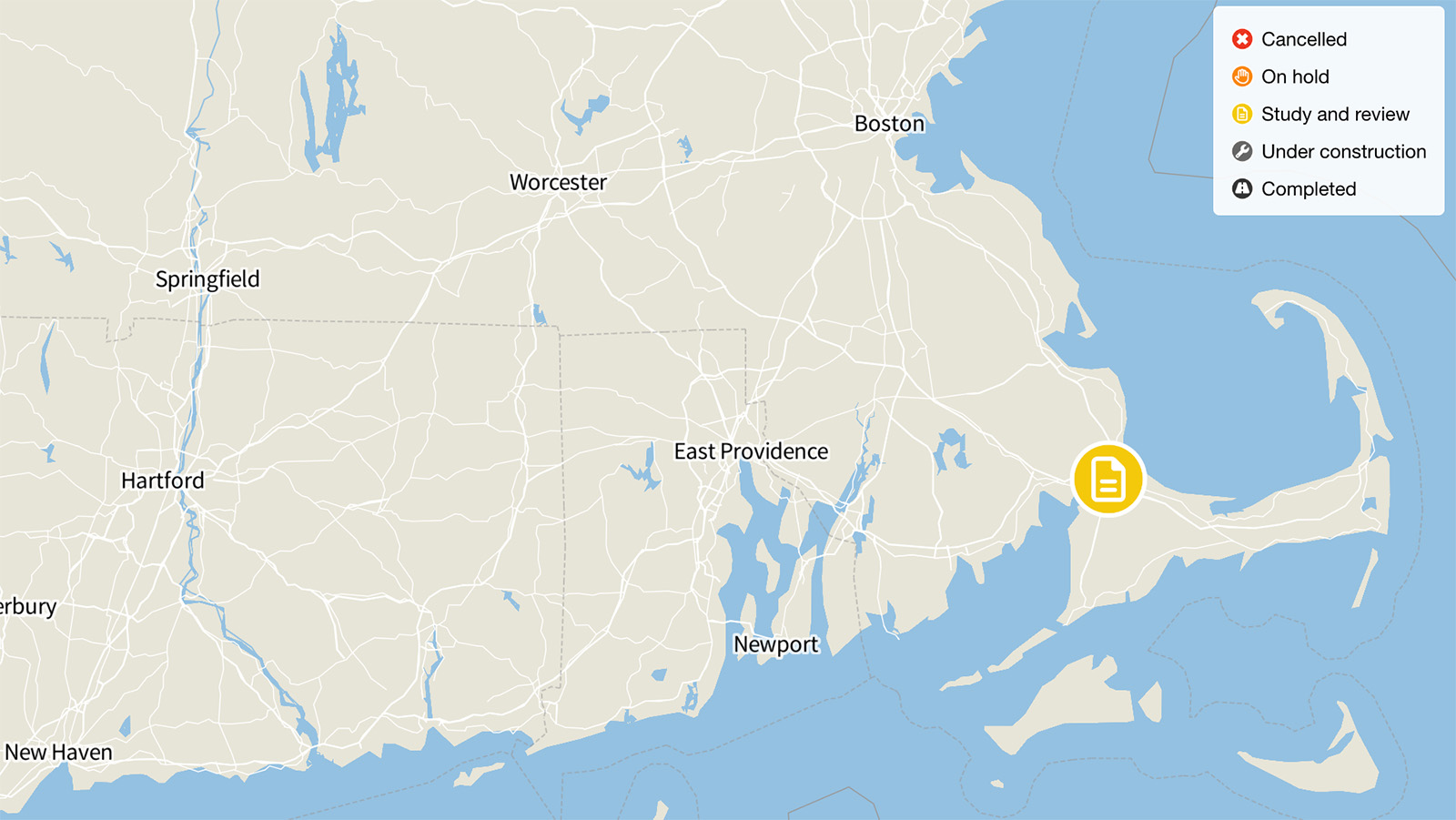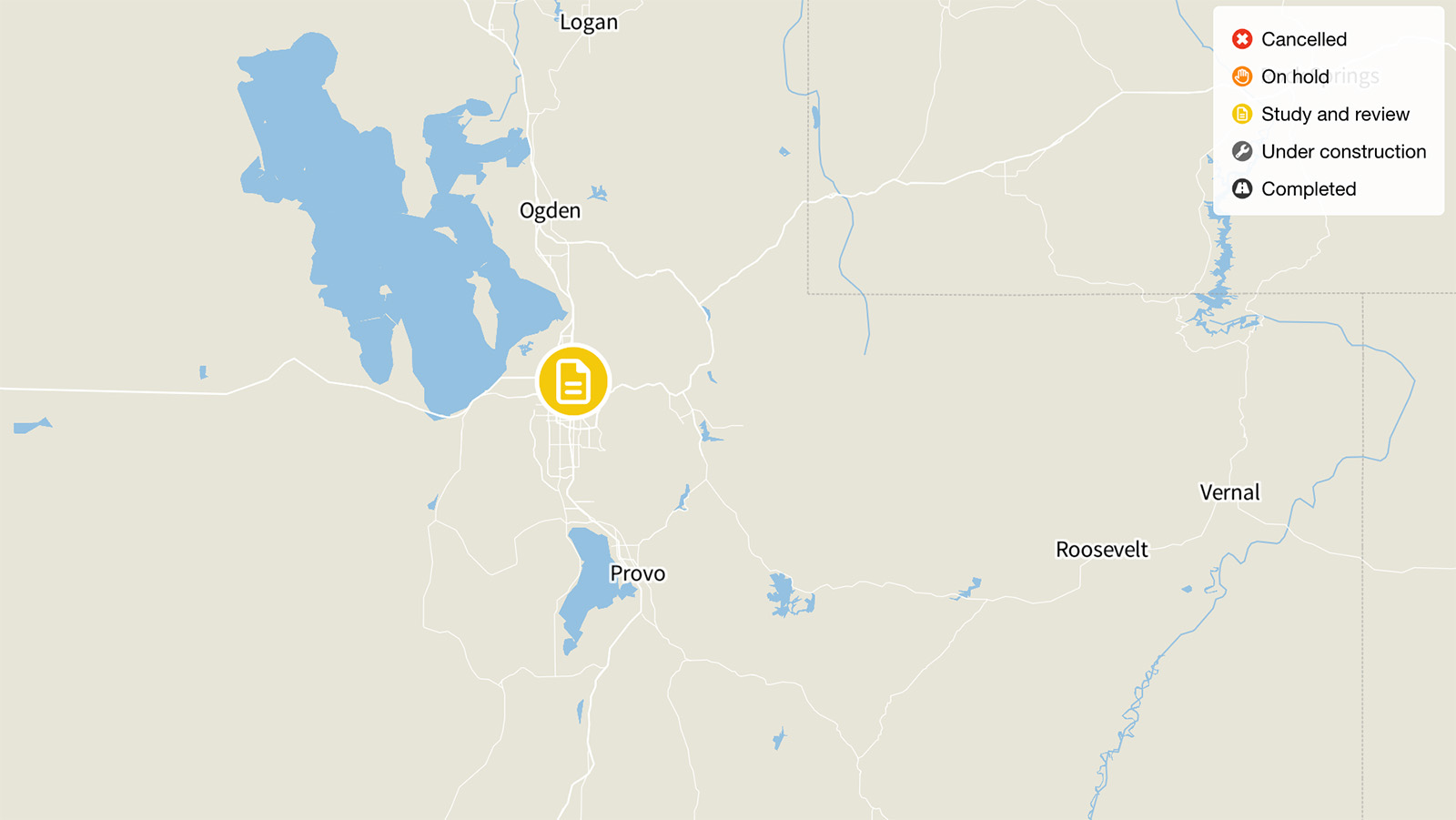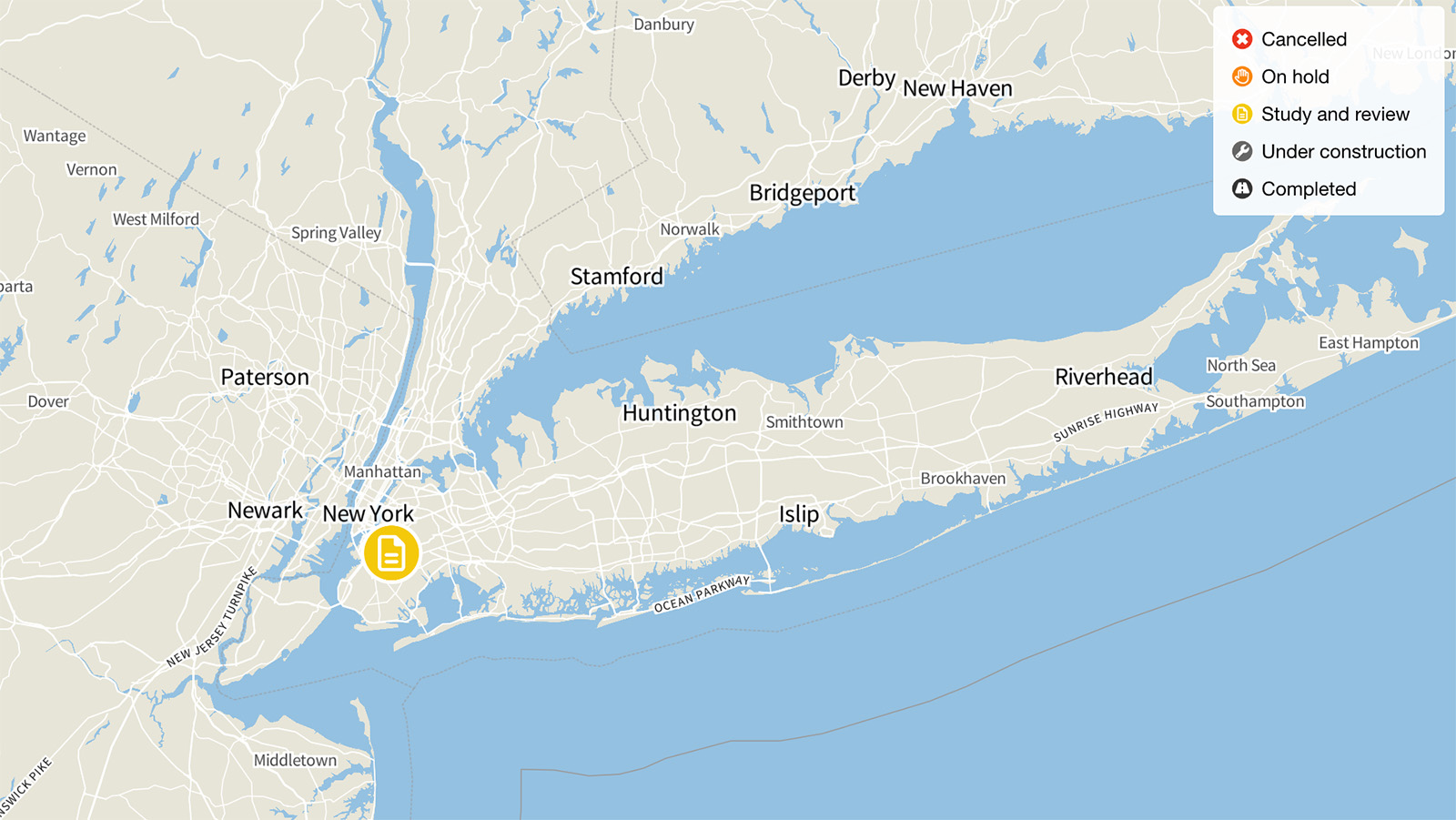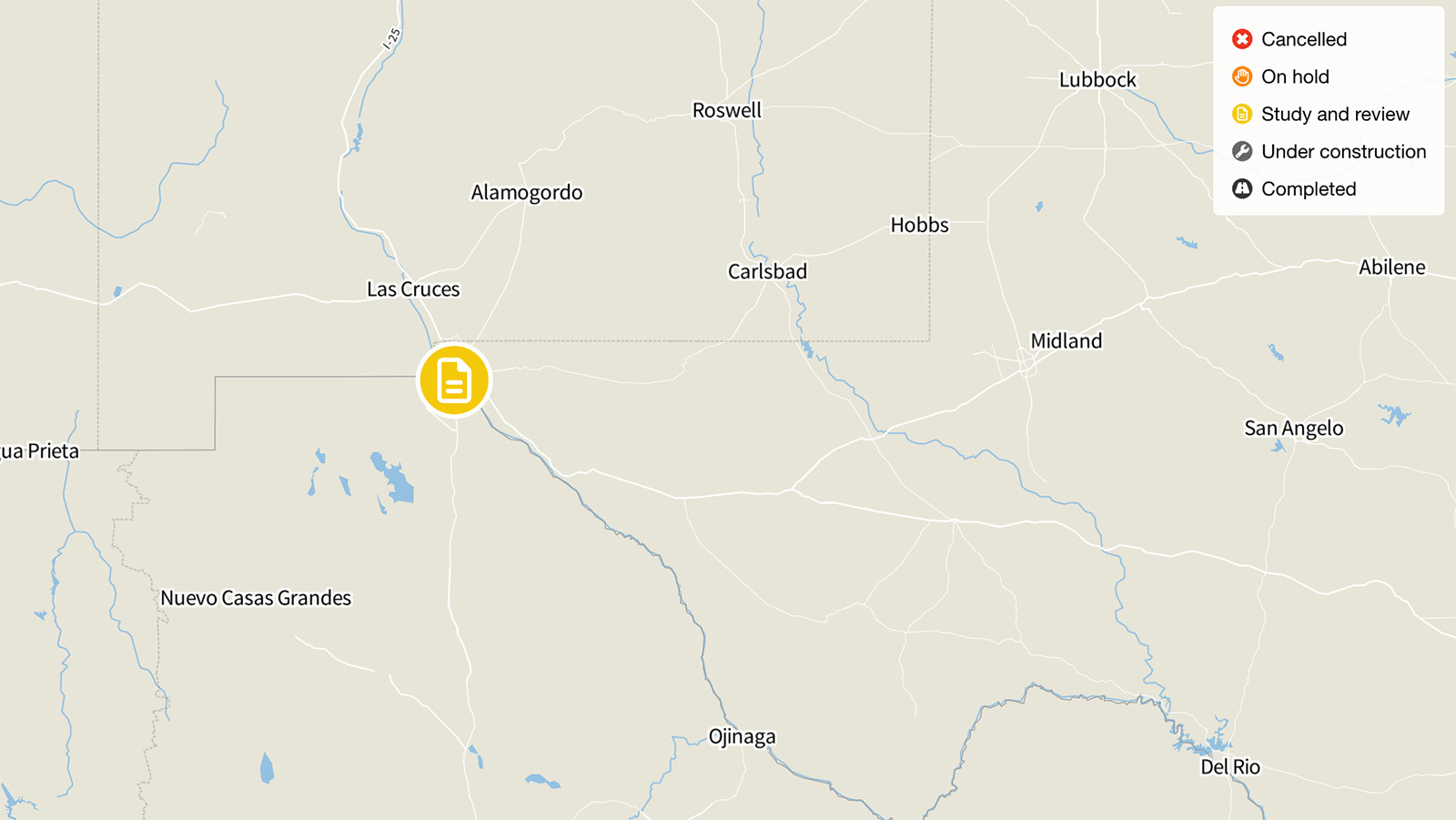
Bourne and Sagamore Bridges, Massachusetts

Status: Study and review
Projected cost: $4 billion
The Bourne and Sagamore bridges across the Cape Cod Canal provide the only roadway access to the Cape Cod peninsula from mainland Massachusetts. Built in 1935, these landmarks now struggle under the volume of traffic they carry and are badly in need of maintenance and repair. A 2019 study by the Army Corps of Engineers (USACE), the federal entity that owns the structures, deemed them “functionally obsolete” – that is, unable to handle the volume of traffic they currently carry. The Bourne is rated as “structurally deficient” and the Sagamore as in “fair” condition, although there are “no imminent safety concerns” with either of them.
In 2020, the USACE recommended replacing the structures with two new, wider bridges – necessary, it claimed, to alleviate traffic congestion.
The project’s sizeable price tag and MassDOT’s failure to secure federal funding has thwarted the agency’s plans to move forward. Initially estimated at $1.5 billion, the projected cost has now risen to $4 billion. MassDOT has already spent around $25 million in state funds on studies and data collection initiatives, but funding for the bulk of the project cost has yet to be identified. By January 2023, applications for funding from three separate discretionary grant programs under the IIJA submitted by MassDOT in 2022 had been rejected. The project will, however, receive a $1.6 million Bridge Planning grant to accelerate planning work.
Despite continued uncertainty over how the project will be funded, as of August 2023, MassDOT was in the process of developing and refining options for the design of the bridge and roadway. While the design is still yet to be finalized, in November 2022 MassDOT published a number of options, indicating that their preferred alternative was arch bridges similar in style to the current structures.
Each existing bridge, according to MassDOT, would likely be replaced with twin bridges sitting side-by-side. In other words, where there are now two structures, there will, if these plans go ahead, be four. According to the agency’s project manager for the project, each new structure would likely have two 12-foot-wide travel lanes, a 12-foot-wide entrance/exit lane, a 10-foot-wide shoulder and a 4-foot-wide shoulder. Each bridge would carry traffic only going in one direction.
This will most likely be accompanied by additional roadway infrastructure on either side of the bridges. The USACE report notes that “additional improvements” are under consideration, which “while not necessary to accommodate the new bridges or increase traffic capacity, will further improve transportation on and off Cape Cod.” MassDOT has recommended a variety of significant roadway improvements and expansions associated with the bridge replacement. This is consistent with plans articulated in the USACE study to “modify the approaches to match the new bridges, and ease traffic entering and exiting the highways in the vicinity of the bridges.” The cost of these is not included in the overall project cost.
The proposed increase in lane capacity has local residents concerned that the new bridges – capable of accommodating cars traveling at speeds up to 15 mph to 20 mph faster than on the current bridges – will bring more and faster traffic to the Cape. (Speed limits are likely to be 55 mph on the Bourne Bridge and 60 mph on the Sagamore Bridge – the limit on both existing bridges is currently 40 mph.) Residents have also raised concerns about pedestrian safety issues arising from the construction of new interchanges, particularly given the proximity of the Bourne middle and high schools and Upper Cape Cod Regional Technical High School, as well as impacts on local homes and businesses.
While the worst of the Cape’s already dire traffic problems stem from vehicles getting on or off the bridges, congestion elsewhere on the Cape is already notoriously bad, and, since the Cape is a peninsula, limited as to how much more it can take. Residents have raised concerns that the increased capacity of the new bridges will result in even more congestion on already overcrowded local roads, increasing the number of cars clogging Cape Cod’s picturesque villages and beachside parking lots and increasing air pollution and greenhouse gas emissions.
Experts agree. Jim Aloisi, a former state transportation secretary and board member of the advocacy group TransitMatters, was recently interviewed by the Cape & Islands NPR station about the project. “Every piece of data, every lesson from history is that any roadway, highway, bridge expansion is typically followed by the same levels of congestion,” warned Aloisi. “If you build it, people will come.” In February 2023, Kevin Sullivan, state transportation secretary from 1999 to 2002, speaking on CAI’s “Morning Edition,” stressed the need to keep all options on the table – including rail and ferries – rather than simply assuming that more and wider roads are the answer: “If people are worried about climate change, you’ve got to look at rail as an alternative.”
Investing in additional transportation options to and from the Cape, such as ferry, rail and bus service, could reduce the need for travelers to rely on personal vehicles. Though not a substitute for the bridges, the volume of traffic the bridges are expected to carry could be reduced by the addition of more options for getting onto the Cape. Investment in the Cape Cod Regional Transit Authority could improve local transportation options on the Cape itself and provide visitors with a way to enjoy the region’s attractions without overrunning the area with cars, as could connecting up the Cape’s legendary but disjointed network of bike trails. As it is, neither rail nor other non-auto modes of transport have been discussed in any serious way as alternatives to the bridge replacement.
Currently, rail service to the Cape is limited to the Cape Flyer – a seasonal rail that operates only on weekends over the summer. A 2021 study by TransitMatters found substantial local support for a year-round service, including from municipal bodies in Wareham and Bourne. The study argues that faster and frequent all-day service would make rail a more attractive option for reaching the Cape during peak tourist season, and since much of the track is already in place, leaving upgrades to stations at Wareham and Buzzards Bay as the only major upfront costs, it would be a cost-effective use of funds. At present, plans for any such investment in rail service have “not moved beyond the conceptual phase.”
With the majority of funding for the Sagamore and Bourne bridges project still to be identified, MassDOT and USACE say they will continue to seek federal grant opportunities, and that they intend to pursue IIJA funding for the FY 2023 round of Notice of Funding Opportunities (NOFOs), with the aim of securing funding by September 2025 and starting construction around a year later.
In August 2023, the office of Massachusetts Governor Maura Healey announced a change of approach. Whereas previous attempts had sought funding for both bridges simultaneously, the administration now says it will shortly submit applications for $1.45 billion in federal funding primarily to replace the Sagamore Bridge. The new proposal staggers the project, with construction of the new Sagamore Bridge set to begin in in 2028 and the Bourne Bridge in 2029, assuming funding can be secured. In the meantime, signaling the state’s continued commitment to pushing this project through, in May 2023 Healey pledged to double the state’s contribution, providing up to $700 million.
Topics
Find Out More


I-15 Expansion, Salt Lake City

The Brooklyn-Queens Expressway, New York

